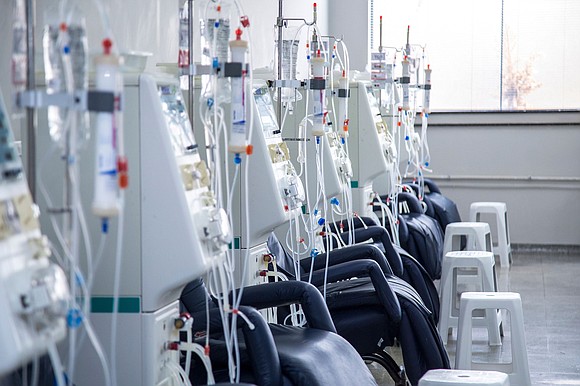Black, Hispanic dialysis patients are at greater risk of dangerous bloodstream infections
CNN/Stylemagazine.com Newswire | 2/6/2023, 1:59 p.m.

Originally Published: 06 FEB 23 14:27 ET
Updated: 06 FEB 23 14:39 ET
By Brenda Goodman, CNN
(CNN) -- Patients with failing kidneys who need regular dialysis treatments still have sky-high rates of dangerous staph infections in their blood compared with people who don't need these treatments, according to a new Vital Signs report from the US Centers for Disease Control and Prevention. Rates of infection are particularly high among people who are Black or Hispanic or who have a lower socioeconomic status, the report said.
More than half a million Americans rely on regular dialysis treatments to filter toxins from their blood because their kidneys are no longer working as well as they should. Dialysis relies on the use of catheters and needles which circulate a patient's blood through a machine in order to clean it.
"Germs like staph can get into the patient's bloodstream via these access points," Dr. Debra Houry, acting principal deputy director of the CDC, said during a news briefing on Monday. "These infections can be serious or deadly, and some are resistant to some of the most common antibiotics used to treat them."
The study shows that between 2017 and 2020, patients on hemodialysis had an annual rate of bloodstream infections caused by the bacteria Staphylococcus aureus that was 100 times higher than adults who are not on dialysis -- 4,248 infections for every 100,000 person years compared with 42 of 100,000 person years, respectively.
Out of nearly 15,000 bloodstream infections reported to the government's National Healthcare Safety Network in 2020, about one in three were caused by Staphylococcus aureus, and about one-third of those were caused by antibiotic-resistant bacteria.
The study found the type of access used for dialysis was important, too. Patients who were connected to the machine via a central venous catheter had a higher risk of infection. With the catheter, a thin tube is inserted directly into a vein, usually in the neck or chest; the other end remains outside the body and is exposed to germs.
"Our data confirm this use of a central venous catheter as a vascular access type has six times higher risk for staph bloodstream infections, compared with the lower risk, lowest risk fistula access," study author Dr. Shannon Novosad, dialysis safety team lead in the CDC's Division of Healthcare Quality and Promotion said in the briefing.
These bloodstream infections linked to dialysis disproportionately affect Black and Hispanic adults, because they are at higher risk for kidney disease because of higher rates of diabetes and hypertension.
"Overall for Hispanic patients after adjusting for other factors, we found a 40% higher risk of bloodstream infection for that group," said Novosad.
The study also found that these infections were associated with lower socioeconomic status. Patients who progress to end-stage kidney disease often have difficulty accessing primary care to manage chronic health conditions.
According to the study authors, staph infections associated with dialysis dropped 40% between 2014 and 2019, but the study shows there's still a long way to go to make dialysis treatments safer for patients who need them.



